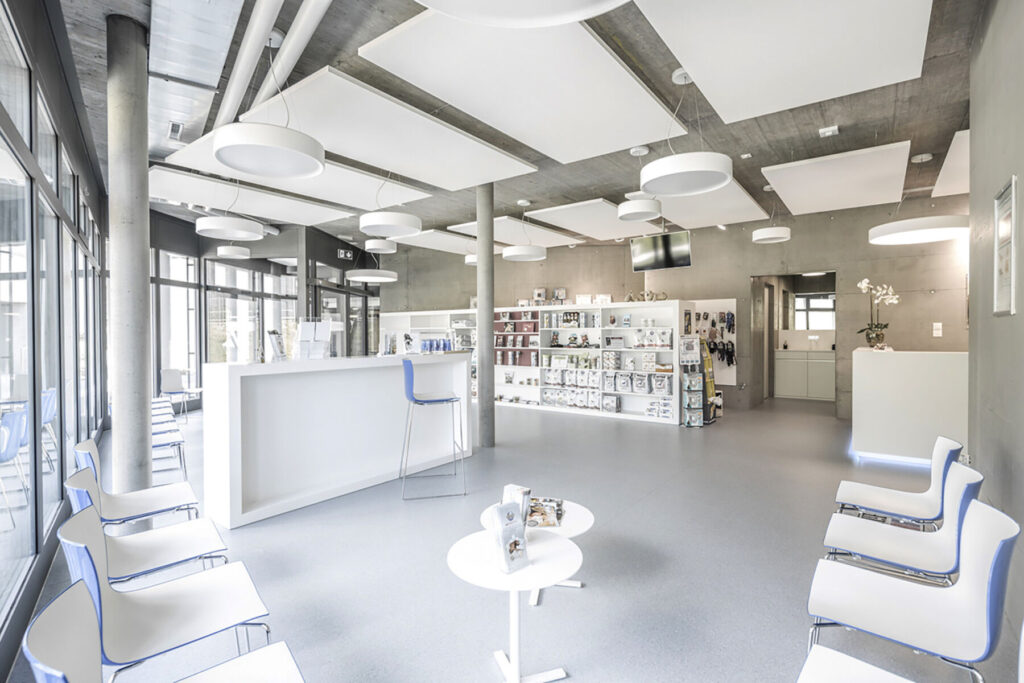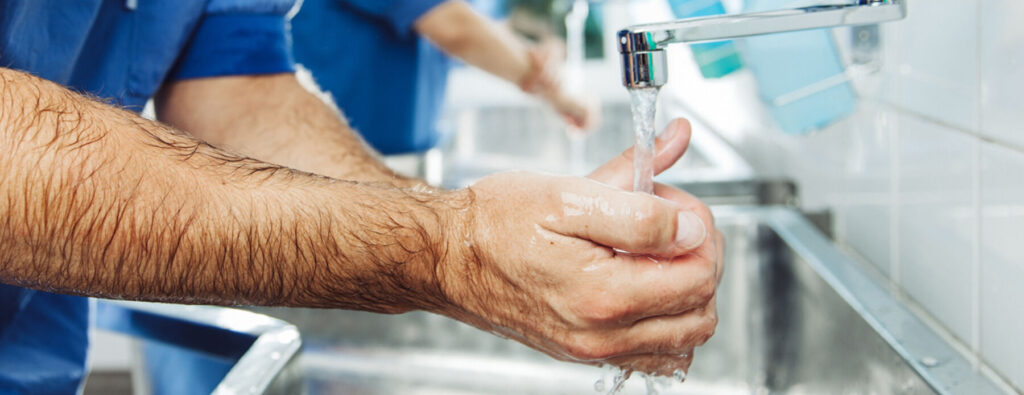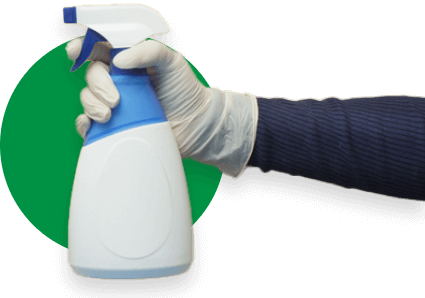Veterinary cleaning protocols ensure safe, hygienic environments, preventing disease transmission in animal hospitals. These structured procedures protect both animals and humans from healthcare-associated infections through systematic disinfection. Implementing comprehensive protocols maintains patient safety while preserving facility reputations and operational effectiveness.
What Are Veterinary Cleaning Protocols?
Veterinary cleaning protocols are structured plans outlining specific tasks, frequencies, and methods for maintaining cleanliness. These systematic approaches organize disinfection procedures by area, contamination risk level, and required frequency. Each protocol component targets infection control requirements, preventing cross-contamination between animals and humans.
The protocol framework encompasses multiple operational components maintaining continuous hygiene standards:
- Task Specifications: Detailed descriptions of cleaning procedures for different areas, including examination rooms and kennels.
- Frequency Requirements: Scheduling guidelines ranging from hourly to monthly cleaning based on contamination risk levels.
- Product Selection: Approved disinfectants and cleaning solutions effective against veterinary pathogens without equipment damage.
- Safety Procedures: Personal protective equipment requirements and exposure prevention protocols for staff members.
- Documentation Systems: Record-keeping methods tracking cleaning completion, product usage, and infection outbreak responses.
These components create comprehensive approaches, ensuring no surface goes unnoticed during cleaning cycles.
Professional veterinary cleaning requires specialized expertise beyond standard commercial cleaning approaches throughout facilities. Our medical facility cleaning services implement evidence-based protocols specifically designed for veterinary hospital environments. Trained teams understand unique contamination risks associated with animal healthcare and deliver consistent results.

Why Veterinary Cleaning Protocols Matter
Healthcare-associated infections pose serious risks in veterinary hospitals, affecting both animal and human health. Research shows 82% of veterinary teaching hospitals reported nosocomial disease outbreaks within five years. These preventable infections compromise patient recovery while threatening staff safety throughout daily operations.
Nosocomial infections significantly impact hospitalized animals requiring extended treatment and increased costs. Studies indicate up to 19.7% of hospitalized horses and 16.3% of dogs experienced nosocomial events. Common infections include surgical site infections, Clostridium difficile, and species-specific ailments like peritonitis.
Cross-contamination between veterinary and human medicine creates complex infection transmission pathways throughout facilities. Infections spread from person to person, between humans and animals, and among animals. This multifaceted transmission significantly increases the potential for disease spread without proper protocols.
Facility reputation depends on maintaining high cleanliness standards visible to clients during visits. Clean environments reflect professional standards while demonstrating commitment to patient welfare and safety. Tarnished reputations from infection outbreaks damage client trust, reducing practice profitability long-term.
Staff safety requires protection from occupational exposure to infectious agents during daily duties. Proper protocols prevent disease transmission to veterinary workers handling infectious patients and contaminated materials. Protecting employee health maintains workforce stability while reducing liability from workplace illness.
Regulatory compliance demands adherence to infection control standards throughout veterinary facility operations. Professional cleaning services ensure facilities meet health department requirements, avoiding penalties and citations. Maintaining compliance protects operating licenses while demonstrating commitment to public health standards.
Risk Factors in Veterinary Healthcare Environments
Veterinary clinics encounter various risk factors jeopardizing animal and human health throughout operations. Understanding these contamination sources helps facilities implement targeted prevention strategies. Two primary risk categories demand continuous attention in veterinary settings.
Healthcare-associated infections represent significant concerns for animal and human health in hospitals:
- Nosocomial Infections: Animals acquire infections during hospitalization from environmental contamination or procedure complications.
- Surgical Site Infections: Post-operative complications resulting from inadequate sterilization or contaminated surgical environments.
- Environmental Pathogens: Bacteria, viruses, and fungi persist on surfaces between patient visits, transmitting diseases.
- Species-Specific Diseases: Ailments like calicivirus and peritonitis are spreading among susceptible animal populations in facilities.
These infection sources require comprehensive disinfection approaches targeting multiple transmission pathways simultaneously.
Contact with animals creates complex infection transmission scenarios requiring enhanced protective measures. Person-to-animal transmission occurs when staff members inadvertently carry pathogens from contaminated surfaces. Animal-to-person transmission exposes veterinary workers to zoonotic diseases during examination and treatment procedures. Animal-to-animal transmission spreads diseases throughout facility populations without proper isolation and cleaning protocols.
Environmental factors aid pathogen transmission when surfaces remain inadequately cleaned between patient contacts. Waiting rooms, examination tables, and kennel areas harbor infectious agents without regular disinfection. Equipment sharing between patients without proper sterilization creates direct contamination pathways, spreading diseases.
Statistics reveal concerning cleaning effectiveness gaps requiring protocol improvements throughout healthcare facilities. Research shows that less than 50% of hospital rooms receive adequate cleaning and disinfection. These deficiencies allow pathogen persistence, creating ongoing infection risks for subsequent patients and staff.
Key Practices in Veterinary Cleaning Protocols
Comprehensive veterinary cleaning protocols incorporate multiple practices addressing different contamination pathways throughout facilities. These fundamental components work together to prevent infection transmission while maintaining safe environments. Understanding each practice helps facilities implement effective, integrated cleaning programs.
Hand hygiene represents the most critical infection prevention measure in veterinary settings:
- Timing Requirements: Veterinarians wash their hands before and after every patient appointment, preventing pathogen transfer.
- Product Selection: Soap and water or alcohol-based hand sanitizers eliminate microorganisms acquired from animals.
- Technique Standards: Proper handwashing duration and coverage ensure complete pathogen removal from skin surfaces.
This practice significantly reduces microorganism transfer from animals, individuals, and contaminated equipment throughout operations.
Personal protective equipment prevents potentially contaminated body fluids from contacting workers’ clothes and skin. Both employees and employers determine the specific PPE necessary based on situational contamination risks. Gloves, masks, and gowns create physical barriers against infectious agent transmission. Proper PPE usage maintains sterile environments while safeguarding staff health during patient care.
Waste management prevents infection spread through the proper disposal of contaminated materials throughout facilities:
- Sharps Disposal: Needles and blades require immediate placement in designated bins, preventing injury and infection.
- Organic Matter Handling: Feces, urine, and blood contain infectious microorganisms requiring secure bagging and disposal.
- Laundry Management: Heavily soiled items undergo immediate disposal while washable items receive proper decontamination cycles.
These procedures maintain hygiene standards, preventing pathogen spread within facilities and surrounding communities.
Regular disinfection of high-contact surfaces reduces pathogen accumulation in frequently touched areas. Low-contact areas like front desks require biweekly cleaning with immediate disinfection if soiled. High-contact zones, including examination rooms and kennels, demand cleaning and disinfection after patient visits. Floors require daily cleaning and disinfection, especially with potentially infectious patients present. Carpets need weekly vacuuming and steam cleaning when visibly dirty, maintaining long-term hygiene.
Infection Risk Assessment for Veterinary Facilities
Conducting thorough infection risk assessments identifies potential disease transmission hotspots throughout veterinary clinics. This systematic evaluation examines every facility area, determining appropriate cleaning frequencies and methods. Comprehensive assessments guide resource allocation, maximizing infection prevention effectiveness while managing operational costs.
High-traffic zones require enhanced attention during risk assessment processes, identifying elevated transmission potential:
- Waiting Rooms: Multiple animals and owners congregate, creating cross-contamination opportunities from different disease sources.
- Consultation Rooms: Examination tables and equipment contact numerous patients daily, requiring frequent disinfection between visits.
- Treatment Areas: Surgical suites and intensive care zones harbor the highest contamination risks, demanding stringent protocols.
These areas receive priority attention during protocol development, ensuring adequate protection for occupants.
Medical equipment evaluation determines appropriate decontamination procedures based on contamination exposure levels. Critical equipment contacting sterile body sites requires sterilization, eliminating all microorganisms, including spores. Semi-critical equipment touching mucous membranes needs high-level disinfection, destroying most pathogens. Noncritical equipment contacting intact skin requires low-level disinfection, removing vegetative bacteria and viruses.
| Risk Level | Area Examples | Cleaning Frequency | Disinfection Method |
| High | Examination rooms, surgical suites | After each patient | High-level disinfectants |
| Medium | Waiting rooms, staff areas | Daily | Intermediate disinfectants |
| Low | Administrative offices | Biweekly | Low-level cleaners |
| Variable | Floors, carpets | Daily to weekly | Appropriate for surface type |
This classification system ensures appropriate treatment intensity matching infection transmission risks effectively.
Cleaning product assessment ensures effectiveness against pathogens without damaging delicate equipment inappropriately. Products must demonstrate broad-spectrum antimicrobial activity, eliminating common veterinary pathogens. Compatibility with equipment materials prevents corrosion or degradation during repeated disinfection cycles. Safety considerations protect staff and animals from hazardous chemical exposure in enclosed spaces.
Public area evaluation balances disinfection effectiveness with occupant safety during normal operating hours. Products used in waiting rooms must quickly become safe after application, preventing exposure. Odor considerations maintain comfortable environments for anxious animals and concerned owners throughout visits.

Standard Operating Procedures for Veterinary Cleaning Protocols
Standard Operating Procedures provide comprehensive guides outlining specific procedures for cleaning and disinfection. These detailed documents address areas requiring focused attention, ensuring smooth operational flow throughout facilities. SOPs transform general protocols into actionable step-by-step instructions that staff members follow consistently.
Developing effective SOPs begins with conducting thorough risk assessments, identifying critical areas and equipment. This foundational analysis determines which surfaces demand meticulous care based on contamination exposure. During outbreaks, well-structured SOPs prevent disorganization that exacerbates disease spread throughout populations.
SOPs specify cleaning processes while guiding safe, appropriate use of cleaning products and disinfectants:
- Product Instructions: Detailed guidance on dilution ratios, contact times, and application methods for disinfectants.
- Safety Protocols: Procedures for handling accidental spills, chemical exposure, and emergency response situations.
- Storage Guidelines: Manufacturer-recommended conditions maintain product effectiveness while preventing degradation or contamination.
- Equipment Care: Maintenance procedures for cleaning tools, preventing cross-contamination between different facility areas.
These specifications ensure consistent implementation regardless of individual staff member experience levels.
Incorporating checklists within SOPs greatly assists staff in ensuring no crucial step goes unnoticed. This becomes particularly important considering statistics showing less than 50% adequate cleaning rates. Visual checklists provide quick reference guides during busy operational periods, preventing oversight.
SOPs should remain readily accessible to all staff members in convenient locations throughout facilities. Regular reviews ensure procedures remain relevant and effective, addressing new challenges or findings. Post-infection outbreak audits provide excellent opportunities to reassess and update SOPs, incorporating lessons learned.
Training programs familiarize staff members with SOP content, ensuring competency in procedure execution. Regular updates address protocol changes, new product introductions, and emerging infection threats. Hands-on demonstrations verify understanding while building confidence in proper technique application throughout shifts.
Sterilization and Equipment Cleaning Protocols
Sterilization protocols in veterinary clinics follow meticulous processes ensuring complete pathogen elimination. Staff thoroughly clean all instruments removing organic debris before sterilization procedures begin. Proper cleaning removes visible contamination while preparing surfaces for subsequent sterilization effectiveness.
After cleaning, staff dry instruments with box locks opened, exposing all surfaces. This positioning allows steam penetration during autoclave cycles reaching hidden areas inside complex instruments. Strategic placement within autoclaves maximizes steam circulation ensuring uniform temperature distribution throughout loads.
Standard autoclave protocols involve specific temperature, pressure, and time parameters destroying all microorganisms:
- Temperature Setting: 121°C (250°F) creates conditions lethal to resistant bacterial spores and viruses.
- Pressure Requirement: 15 psi ensures proper steam penetration through instrument packages and complex geometries.
- Minimum Duration: 13-15 minutes exposure time with additional safety margins often added for verification.
These parameters ensure elimination of potential contaminants maintaining high hygiene and safety standards.
Cleaning veterinary equipment effectively involves several sterilization technique options based on materials. Wet heat sterilization uses steam under pressure for heat-stable instruments and materials. Dry heat sterilization accommodates moisture-sensitive items requiring alternative approaches. Chemical sterilization addresses heat-sensitive equipment unable to withstand autoclave temperatures. Radiation sterilization provides options for specialized equipment requiring unique decontamination methods.
Ultrasonic cleaners offer efficient solutions for instruments with complex geometries and crevices. These devices use high-frequency sound waves creating cavitation bubbles removing debris from inaccessible areas. Cleaning solution selection should align with manufacturer guidelines or established veterinary sterilization protocols. After cleaning, thorough rinsing and proper drying ensure complete sterilization and readiness.
Disinfectant Selection for Veterinary Hospitals
Selecting appropriate disinfectants ensures effective pathogen elimination without damaging equipment or harming occupants. Product evaluation considers antimicrobial spectrum, contact time requirements, and surface compatibility. Understanding disinfectant characteristics helps facilities make informed purchasing decisions optimizing infection control.
F10SC stands out as a highly effective disinfectant for veterinary hospitals, offering broad-spectrum coverage. This solution safely targets a wide range of pathogens without causing harmful side effects. Its compatibility with people, animals, and equipment makes it the preferred choice for maintaining environments. The product effectively eliminates bacteria, viruses, and fungi common in veterinary settings.
Disinfectant effectiveness depends on proper application following the manufacturer’s contact time recommendations consistently. Insufficient contact times fail to achieve complete pathogen elimination, leaving surfaces inadequately disinfected. Excessive dilution reduces antimicrobial potency, compromising infection control effectiveness throughout facilities. Staff training ensures proper product usage, maximizing disinfection outcomes while controlling costs.
Surface compatibility prevents equipment damage during repeated disinfection cycles, maintaining operational functionality. Harsh chemicals corrode metal instruments or degrade plastic components, reducing equipment lifespans. Product selection balances antimicrobial effectiveness with material preservation, protecting capital investments. Testing new products on inconspicuous areas identifies potential compatibility issues before widespread application.
Environmental safety considerations protect staff, animals, and clients from hazardous chemical exposure. Low-toxicity formulations reduce occupational health risks during daily cleaning operations throughout shifts. Proper ventilation during application prevents respiratory irritation from volatile compounds in enclosed spaces. Storage protocols keep products secured, preventing accidental exposure or environmental contamination.
Veterinary Cleaning Protocol Variations by Facility Type
Different veterinary practices require adapted cleaning protocols based on operational characteristics and patient populations. Practice size, service types, and patient volumes influence appropriate cleaning approaches significantly. Understanding these variations helps facilities implement effective, efficient programs matching specific needs.
Small animal practices serving dogs and cats follow standard protocols for routine patient care. Daily disinfection covers examination rooms, waiting areas, and surgical suites, maintaining baseline standards. Weekly deep cleaning addresses less-visible surfaces, including walls, windows, and ventilation systems throughout buildings.
Large animal practices treating horses and livestock require enhanced protocols for larger contamination volumes. Barn and stable areas need daily cleaning, removing substantial organic matter from floors. Specialized equipment for large animals requires adapted cleaning procedures accommodating size and material differences.
Emergency veterinary hospitals demand more frequent cleaning given higher patient volumes and acuity levels. Twenty-four-hour operations require continuous cleaning staff maintaining standards during all shifts without interruption. Trauma cases create unpredictable contamination events requiring immediate response, preventing pathogen spread throughout facilities.
Specialty veterinary practices require enhanced protocols for specific procedures performed regularly throughout operations. Oncology centers need stringent protocols protecting immunocompromised patients from opportunistic infections during treatments. Surgical specialty practices maintain operating room standards exceeding general practice requirements, ensuring optimal outcomes.
Implement Expert Veterinary Cleaning Protocols Today
Veterinary cleaning protocols provide essential frameworks for preventing healthcare-associated infections in animal hospitals. Comprehensive procedures protect animals, humans, and facility reputations through systematic disinfection approaches daily. Dallas Janitorial Services specializes in veterinary hospital cleaning, delivering customized solutions for practices. Contact us today to learn how our expert veterinary cleaning services protect your patients.
Frequently Asked Questions About Veterinary Cleaning Protocols
What is the protocol for veterinary sterilization?
Veterinary sterilization protocols begin with thorough instrument cleaning, removing organic debris completely. Staff dry instruments with box locks opened, exposing all surfaces for effective steam penetration. Autoclaves operate at 121°C (250°F) for a minimum of 13-15 minutes at 15 psi. Additional safety margins ensure complete pathogen elimination, maintaining high hygiene standards.
How to clean veterinary equipment?
Cleaning veterinary equipment involves multiple sterilization techniques, including wet heat and dry heat. Chemical and radiation methods address equipment material compatibility and contamination levels appropriately. Ultrasonic cleaners provide efficient solutions for complex instrument geometries and hard-to-reach areas. Selection of cleaning solutions should align with manufacturer guidelines, ensuring effectiveness and safety.
What is the best disinfectant for veterinary hospitals?
F10SC represents a highly effective disinfectant for veterinary hospitals, offering broad-spectrum pathogen elimination. This solution safely targets a wide range of microorganisms without harmful side effects. Its compatibility with people, animals, and equipment makes it the preferred choice. The product maintains clean, safe environments throughout veterinary settings consistently.
What areas should be cleaned in a veterinary facility?
Veterinary facilities require regular cleaning in staff kitchens, restrooms, and office spaces. Examination rooms and kennels need cleaning after each patient visit, preventing cross-contamination. Waiting rooms require daily attention given multiple animal and owner traffic patterns. Surgical suites demand the highest cleaning standards, maintaining sterile environments for procedures.







